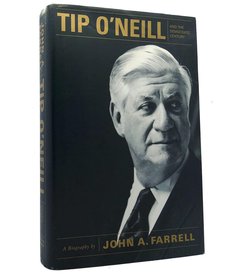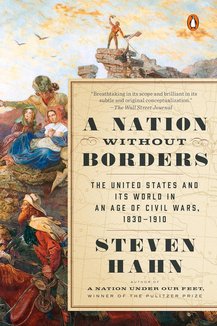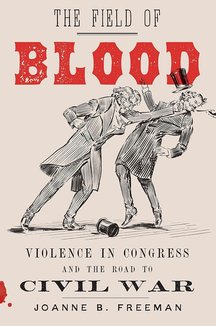Recommended Books

Tip O' Neill and the Democratic Century: A Biography
Author:
John A. Farrell
ISBN 13:
978-0316260497

A Nation Without Borders: The United States and Its World in an Age of Civil Wars, 1830-1910 (The Penguin History of the United States)
Authors:
Steven Hahn
,
Eric Foner
ISBN 13:
978-0143121787
A Pulitzer Prize–winning historian’s "breathtakingly original" (Junot Diaz) reinterpretation of the eight decades surrounding the Civil War. "Capatious [and] buzzing with ideas." --The Boston Globe Volume 3 in the Penguin History of the United States, edited by Eric Foner In this ambitious story of American imperial conquest and capitalist development, Pulitzer Prize–winning historian Steven Hahn takes on the conventional histories of the nineteenth century and offers a perspective that promises to be as enduring as it is controversial. It begins and ends in Mexico and, throughout, is internationalist in orientation. It challenges the political narrative of “sectionalism,” emphasizing the national footing of slavery and the struggle between the northeast and Mississippi Valley for continental supremacy. It places the Civil War in the context of many domestic rebellions against state authority, including those of Native Americans. It fully incorporates the trans-Mississippi west, suggesting the importance of the Pacific to the imperial vision of political leaders and of the west as a proving ground for later imperial projects overseas. It reconfigures the history of capitalism, insisting on the centrality of state formation and slave emancipation to its consolidation. And it identifies a sweeping era of “reconstructions” in the late-nineteenth and early twentieth centuries that simultaneously laid the foundations for corporate liberalism and social democracy. The era from 1830 to 1910 witnessed massive transformations in how people lived, worked, thought about themselves, and struggled to thrive. It also witnessed the birth of economic and political institutions that still shape our world. From an agricultural society with a weak central government, the United States became an urban and industrial society in which government assumed a greater and greater role in the framing of social and economic life. As the book ends, the United States, now a global economic and political power, encounters massive warfare between imperial powers in Europe and a massive revolution on its southern border―the remarkable Mexican Revolution―which together brought the nineteenth century to a close while marking the important themes of the twentieth.

The Field of Blood: Violence in Congress and the Road to Civil War
Author:
Joanne B. Freeman
ISBN 13:
978-0374154776
"One of the best history books I've read in the last few years." ―Chris Hayes The Field of Blood recounts the previously untold story of the violence in Congress that helped spark the Civil War. A NEW YORK TIMES NOTABLE BOOK OF THE YEAR AN NPR BEST BOOK OF THE YEAR ONE OF SMITHSONIAN'S BEST HISTORY BOOKS OF THE YEAR Historian Joanne B. Freeman recovers the long-lost story of physical violence on the floor of the U.S. Congress. Drawing on an extraordinary range of sources, she shows that the Capitol was rife with conflict in the decades before the Civil War. Legislative sessions were often punctuated by mortal threats, canings, flipped desks, and all-out slugfests. When debate broke down, congressmen drew pistols and waved Bowie knives. One representative even killed another in a duel. Many were beaten and bullied in an attempt to intimidate them into compliance, particularly on the issue of slavery. These fights didn’t happen in a vacuum. Freeman’s dramatic accounts of brawls and thrashings tell a larger story of how fisticuffs and journalism, and the powerful emotions they elicited, raised tensions between North and South and led toward war. In the process, she brings the antebellum Congress to life, revealing its rough realities―the feel, sense, and sound of it―as well as its nation-shaping import. Funny, tragic, and rivetingly told, The Field of Blood offers a front-row view of congressional mayhem and sheds new light on the careers of John Quincy Adams, Henry Clay, and other luminaries, as well as introducing a host of lesser-known but no less fascinating men. The result is a fresh understanding of the workings of American democracy and the bonds of Union on the eve of their greatest peril.